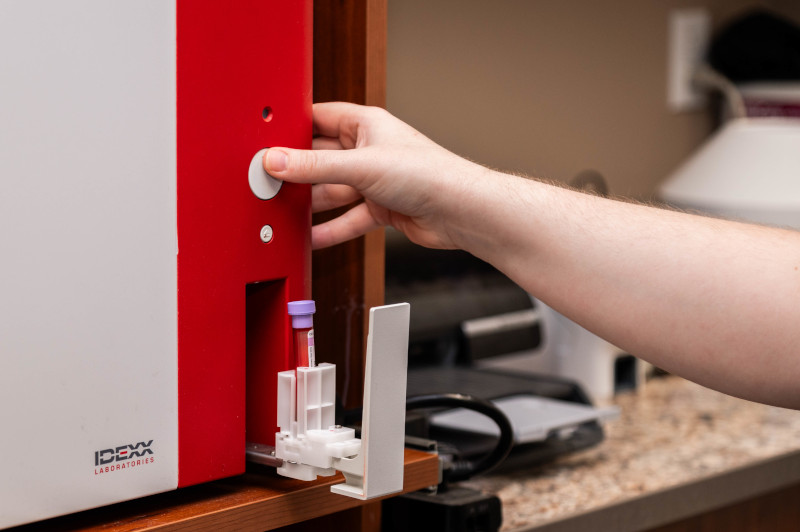It may be needed after a large loss of blood from being hit by a car, after a fight with another animal. It could also be from Immune-Mediated Hemolytic Anemia (IMHA), or they may need it for some other causes that result in a low red blood cell or low platelet count.
Blood Donors and Transfusion FAQ’s
What are the requirements for my pet to be a blood donor?
Your pet to be a blood donor must be calm, friendly, and obedient. They must be healthy and dogs need to be up to date on their Da2LPCPV and Rabies; they must also not be on any medications except on regular flea, tick, and heartworm preventatives. Cats must be healthy and up to date on their FVRCP/Feline Leukemia, and Rabies vaccine.
Is there an age requirement?
Yes, your dog be from 1-6 years old and 35 pounds and up. Cats must be 1-6 years old, 10 lbs or more, and Indoor only.
Are there any diagnostics that must be done before donating?
Yes, each time before your pet donates they will receive a free Complete Blood Count and a Free Blood Chemistry Profile. If your dog is a blood donor, at their yearly visit we will perform a Heartworm 4DX test to check for any tick-borne illness, instead of just a regular Heartworm test.


Do dogs and cats have blood types?
Yes. For dogs, there are more than a dozen different types that are more commonly referred to as “Groups”. There are 6 fairly common groups. Dogs just like humans can be classified as universal donors based on their type or group. Because dogs, just like humans, can suffer adverse reactions to transfused blood from dogs with different types than their own, dogs with the universal blood group are ideal donors. Our test checks for DEA Positive which only goes to other DEA Positives, or DEA Negative which is universal to both types. The blood typing test will let us know which blood type the dog or cat donor animal is.
Cats have 3 types:
- A- most common and can only be given to Type A Cats
- B- more common in purebred cats, and can only be given to Type B cats
- AB- this is very rare and can only be used on other Type AB cats Only
What takes place for the actual blood donation?
For the procedure itself, dogs are gently placed on their sides atop comfortable bedding and soothed while the area on and around their jugular vein is cleaned and prepped. Once the area has been sterilized and, if necessary, clipped or shaved. If the dog is too anxious- light sedation will be given to help with their nerves.
For cats they are placed on comfy bedding and given a light sedative every time, as cats are more anxious by nature. Once the pet is ready, the blood is then drawn through a needle into a sterile collection set.
Does my pet have to stay the night?
After the blood has been collected, dogs are given belly rubs, and edible treats and/or IV fluids help hydrate and replace blood lost during the procedure. Cats’ sedation is reversed and they are given food as well as subcutaneous fluids to help with the blood loss. There are little to no side effects to the donor pet except possible bruising at the site of collection, but that goes away within two to three days. Your pet will be able to go home the same day after waking up. They can have a small meal when they get home.
How often can pets donate?
The amount of blood drawn is not enough to affect your pet’s health. Dogs and cats can safely donate every six weeks. The blood is then given slowly to the recipient and we hope for the best.
If you have any other questions regarding this please contact the practice at 217-342-7444 for details

